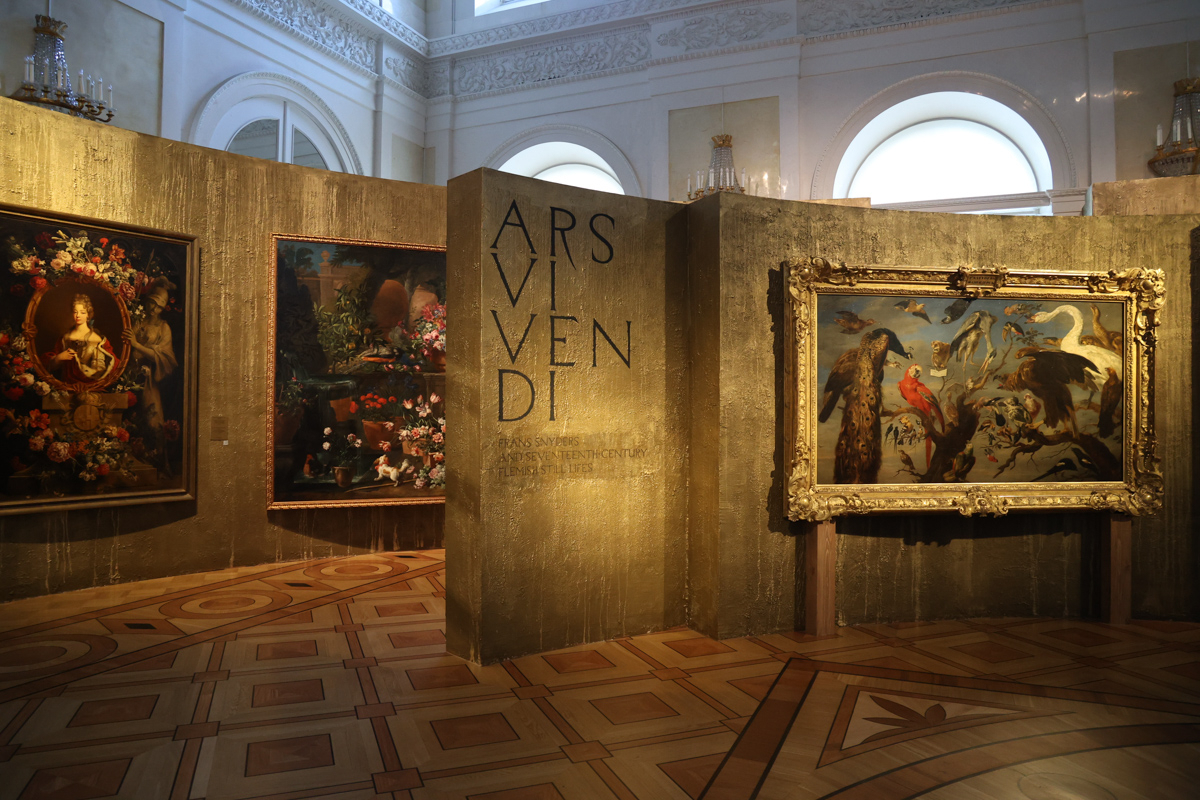The exhibition of the State Hermitage Museum, created together with botanists from St Petersburg University, becomes the ‘Exhibition of the Year’

The project of the State Hermitage Museum, ‘ARS VIVENDI. Frans Snyders and Seventeenth-Century Flemish Still Lifes’, prepared with the participation of botanists from St Petersburg University, was awarded a prize by The Art Newspaper Russia in the ‘Exhibition of the Year’ category.
The exhibition included works of painting, decorative and applied art from the collections of the State Hermitage Museum, the Pushkin State Museum of Fine Arts, a branch of the Archive of the Russian Academy of Sciences, as well as other museums and private collections. This made it possible to present the history of the development of Flemish still life, starting with the heyday of Peter Paul Rubens’ workshop, which brought together the best artists of his time. Among them was Frans Snyders, a still life and animal painter who had a great influence on the whole of European art.
The curators of the exhibition created a new museum space within the State Hermitage Museum that engages in dialogue with the objects in the permanent exhibition, including through theatrical techniques. Artist-designers Yury Suchkov and Emil Kapelush proposed a theatrical narrative that immerses the viewer in the Baroque era. A musical composition was also created especially for the exhibition, bringing together fragments of works by composers of the period, church chants, and the sounds of the late medieval market.
The exhibition began in the Fore Hall of the Hermitage, where the largest paintings were displayed. Among them was the still life ‘Flowers among Architecture (Spring)’ by Abraham Brueghel and David de Coninck. This painting had long been kept in the reception room of the Hermitage Directorate, where it was placed in 1947 after the museum’s return from evacuation. It was restored especially for the exhibition, and botanists from St Petersburg University helped to identify all the flowers depicted. Visitors could find them in the picture and learn all their names from the scheme included in the exhibition catalogue, along with an article by Valentina Bubyreva, Curator of the University Herbarium and Associate Professor at St Petersburg University, on when and which flowers appeared in Europe.
Especially for the opening, the Youth Advisory Council of the State Hermitage created a project entitled ‘Still life symbolism’. Two stands dedicated to the objects and flowers depicted in the canvases helped the public learn to read the allegories and hidden messages encoded in the paintings. The research base for the plant information stand was prepared by botanists from St Petersburg University. Participants in the project included not only art students but also representatives of various scientific fields, including four University staff members.
This exhibition is unique in its own way: we managed to create a visually convincing and authentic synthesis of different types of art and science, and specialists from St Petersburg University created a guide to the botanical collections presented in the exhibition.
Mikhail Dedinkin, Head of the Department of Western European Fine Art at the State Hermitage Museum, curator and creator of the exhibition
‘We plan to continue this exhibition in a new space, including outside the State Hermitage. For this purpose, we have created a 3D view that will make it possible to immerse yourself in the atmosphere we have created without being present at the exhibition,’ said Mikhail Dedinkin, Head of the Department of Western European Fine Art at the State Hermitage Museum, curator and creator of the exhibition.
Previously, books on butterflies and flowers in the museum’s paintings, graphics, and applied arts were published in collaboration with scholars from St Petersburg University. In continuation of the projects already underway, Rector of the University Nikolay Kropachev has proposed organising systematic work on deciphering all the Hermitage’s exhibits and launching a large-scale research project at St Petersburg University, in which undergraduate and postgraduate students and scholars will be able to participate. The results of their work will be displayed in all the halls of the museum, telling visitors about the details hidden in the paintings in the same way as the explanation of the floral still life in the ARS VIVENDI exhibition.

